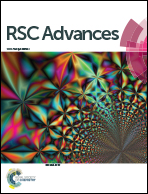Analysis and modeling of the growth of intermetallic compounds in aluminum–steel joints
Abstract
In this work, we experimentally and numerically studied the microstructures and growth of intermetallic compounds (IMCs) formed in Al–Fe (aluminum–steel) joints welded by a pulsed double electrode gas metal arc welding (DE-GMAW)-brazing method. The IMCs consist of Fe2Al5 and FeAl3, with Fe2Al5 being the main compound in the joints. The thickness of an IMC layer increases with an increase of the welding current (heat input) into the base metal. EBSD measurement suggests that the preferred crystal orientation of the Fe2Al5 IMC likely provides the necessary path for Al atoms to migrate through the IMC layer for further growth of the Fe2Al5 IMC layer toward the steel substrate. The Monte Carlo method was used to simulate growth of the IMCs in the joints. Numerical results are in good accord with the experimental results, suggesting that Fe2Al5 IMC is first formed in the initial brazing interface between liquid Al and steel substrate, and then the interface between the liquid Al and steel substrate evolves into two new interfaces: one is an interface between the Fe2Al5 IMC layer and the steel substrate, and the other is an interface between the Fe2Al5 IMC layer and liquid Al. During growth of the Fe2Al5 IMC, FeAl3 IMC forms in the interface between the Fe2Al5 IMC layer and the Al and then grows into the Al. The thickness of the Fe2Al5 layer increases nonlinearly with an increase in the growth time.



 Please wait while we load your content...
Please wait while we load your content...